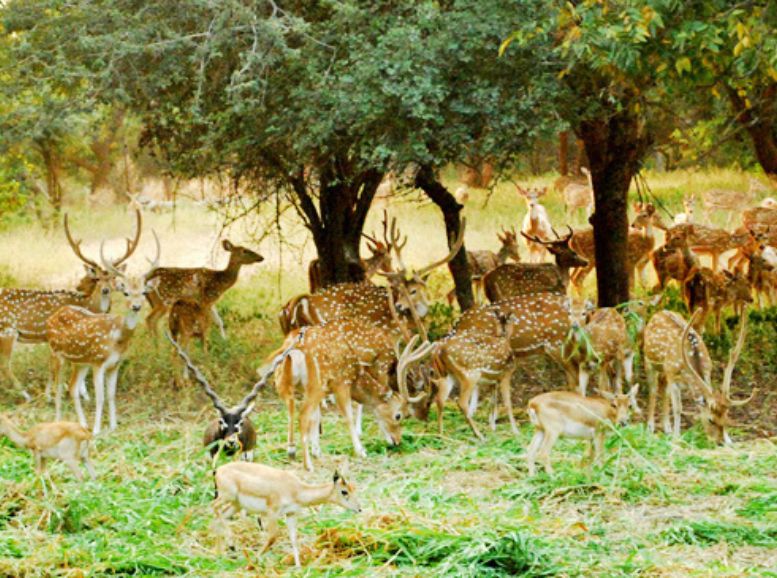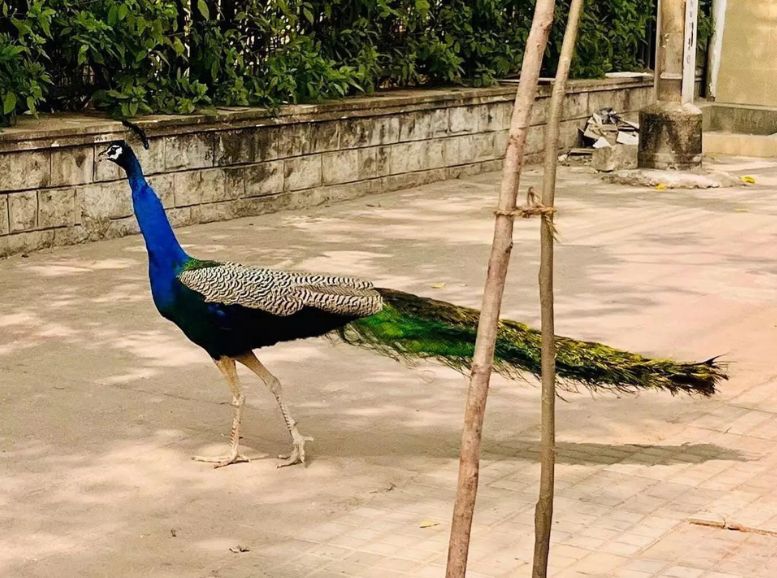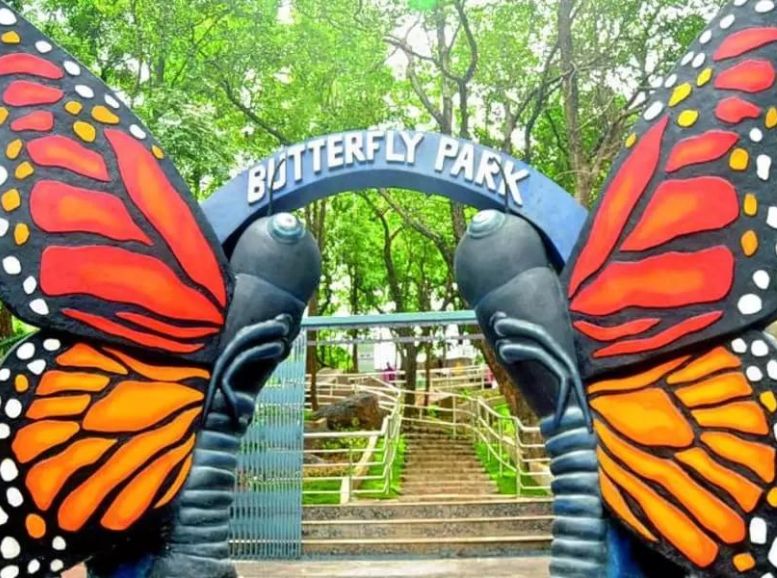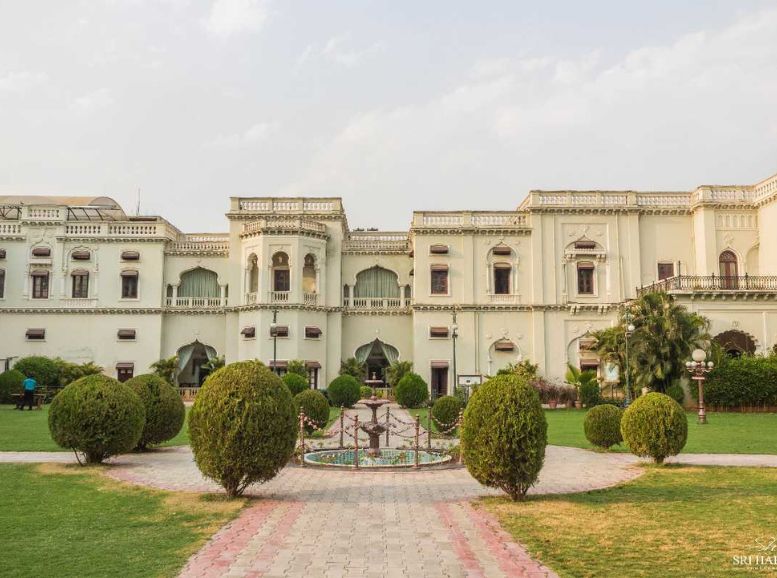Tucked away in the heart of Telangana, KBR National Park is a nature lover’s haven that beckons exploration. Just a stone’s throw from the vibrant city of Hyderabad, this protected area is a tranquil retreat that whispers tales of a forgotten era. With its lush green canopy, diverse wildlife, and serene ambiance, KBR National Park is a treasure trove of biodiversity waiting to be discovered.
In this blog, we’ll delve into the uncharted territories of KBR National Park, uncovering its history, attractions, and activities that make it a must-visit destination for anyone who craves adventure, nature, and wildlife. Whether you’re a seasoned traveler or a curious explorer, KBR National Park has secrets to share and memories to create.
How to reach:
By Bus:
- TSRTC Buses: Hop on a Telangana State Road Transport Corporation (TSRTC) bus. Look for routes servicing Banjara Hills or Jubilee Hills, the closest stops to the park. Aim for buses stopping at Jubilee Hills Check Post or Banjara Hills Road No. 2.
By Air:
- Airport: Arriving at Rajiv Gandhi International Airport? No problem!
- Taxis and Ridesharing: Hail a taxi or book a ride with Uber or Ola for a direct transfer to the park. Expect a 45-minute to 1-hour journey depending on traffic.
By Train:
- Nearest Stations: Choose between Hyderabad Deccan Railway Station (Nampally) or Secunderabad Railway Station, both roughly 10-15 kilometers from the park.
- Connecting Onward: Taxis, auto-rickshaws, or local buses are readily available at both stations to take you the rest of the way.
Best time to visit:
Winter (November to February):
Embrace bliss with winter’s delightful embrace. Sunny days with temperatures ranging from 14°C to 28°C (57°F to 82°F) create the perfect canvas for outdoor adventures. Hike, jog, or simply birdwatch – the choice is yours. Refreshing mornings and evenings paint the park in a serene atmosphere, ideal for capturing stunning photographs or indulging in peaceful nature walks. Lush greenery and vibrant wildlife come alive, making winter a prime time for exploration.
Monsoon (June to October):
Witness KBR National Park transformed into a verdant paradise during the monsoon. The park basks in temperatures between 20°C to 30°C (68°F to 86°F), while frequent showers rejuvenate the flora, bursting with vibrant life. While the verdant beauty reigns supreme, be mindful of potentially slippery paths. Don’t let the occasional downpour deter you – the monsoon offers a refreshing escape for those who relish rain-washed landscapes.
Summer (March to May):
Summer at KBR National Park sees a rise in temperatures, reaching between 25°C to 40°C (77°F to 104°F). The midday sun can be intense, but fret not! Early mornings and evenings provide a delightful window for exploration. During these cooler hours, the park’s dense foliage offers welcome shade. Though summer might not be the most popular season, it can still be enjoyable, especially for early risers seeking a tranquil escape.
Attractions:
Biodiversity and Wildlife:

KBR National Park, a green haven in the middle of busy Hyderabad, is bursting with life! This 390-acre park is like a superhero for the city, cleaning its air and providing a home for all sorts of plants and animals.
But that’s not all! KBR Park is a wildlife wonderland too. From shy jungle cats and playful pangolins to wiggly reptiles and buzzing insects, there’s so much to see. Birdwatchers love this park because more than 100 bird species call it home. Look for the colorful Indian roller, the sweet-singing Oriental magpie-robin, or even an owl or sparrow! With all these birds, plus the park’s famous peacocks, there’s always something fun to hear and see.
Peacock Enclosures:

KBR National Park has something special – a bunch of amazing peacocks! These peacocks live in cool areas built just for them, that look like their real homes outside. They have lots of space to walk around and show off their beautiful feathers that shine in the sun. It’s especially fun to see the peacocks during mating season! The male peacocks fan out their big, colorful tails like a fancy skirt to impress the girls. It’s a dazzling sight! You can even take pictures to remember these special birds.
The peacock areas also teach you neat things about peacocks, like what they eat and how they live. So come see the peacocks at KBR National Park – they’re a sight you won’t forget!
Butterfly Garden, KBR National Park:

The butterfly garden at KBR National Park is like a secret, colorful world! It’s a special place built to attract butterflies, with all sorts of bright flowers and leafy plants they love to eat and lay their eggs on. As you walk through this pretty garden, you’ll see butterflies everywhere – big ones, small ones, and all sorts of colors! You might even see a tiger butterfly or a bright blue Mormon. There are signs around the garden too, that teach you cool things about butterflies, like how they grow and why they’re important.
This garden is a great place for kids and anyone who loves nature to learn and explore. It shows how everything in the world is connected, just like a big team! Plus, it’s a peaceful spot to relax and enjoy the beauty of butterflies.
Historical Monuments:

Hidden amongst the trees of KBR National Park is a special place – the Chiran Palace. This old palace used to be home to a king called the Nizam, showing us a glimpse into the rich history of the area.
While you can’t usually go inside the palace itself, it still adds a feeling of royalty and history to the park. The buildings and gardens around the palace hint at what life was like long ago.
Sometimes, there are even special tours offered where you can learn more about the history of the park and the palace. These tours tell fascinating stories about the kings and queens who lived here, helping you understand the past better.
Local Experiences:
Find Your Zen: Start your day right with invigorating Yoga and Meditation sessions amidst the park’s peaceful surroundings. (Early mornings, 6 AM – 8 AM)
Birdwatching Bonanza: Join guided tours to discover the park’s diverse birdlife. Expert guides will help you spot and identify feathered friends. (Early mornings & late afternoons)
Nature Walks & Learning Adventures: Embark on guided walks to explore the park’s rich flora and fauna. Learn about the ecosystem and ongoing conservation efforts. (Mornings & late afternoons)
Get Fit & Energized: Lace up your shoes and hit the well-maintained jogging trails. The park’s natural beauty provides a scenic backdrop for your workout. (Early mornings & evenings)
Capture Memories: Join photography expeditions to capture stunning landscapes and wildlife. Whether you’re a pro or an amateur, the park offers endless opportunities. (Early mornings & late afternoons)
Picnic Perfection: Pack a basket and enjoy a relaxing picnic at designated spots. Let nature be your backdrop for family fun and games. (Weekends & holidays, cooler parts of the day)
Go Green! Participate in interactive workshops and activities focused on environmental conservation, sustainable living, and biodiversity. (Scheduled events, check the park calendar)
Peacock Paradise: Witness the majesty of peacocks in their natural habitat at the designated enclosures. The mating season boasts a particularly dazzling display of feathers. (Early mornings & evenings)
Butterfly Magic: Explore the butterfly garden, a haven for these colorful creatures. Learn about their life cycles and the plants they depend on. (Mornings)
History Unveiled: Explore the historic Chiran Palace and its surroundings. Occasionally, guided walks offer deeper insights into its significance. (Check for scheduled walks/tours)
Travel tips:
Entry Fees & Timings:
- Check the park’s website for current entry fees (adults, children, foreigners).
- Typical timings: 5:00 AM – 10:00 AM & 4:00 PM – 7:00 PM (confirm before visiting).
What to Pack:
- Comfortable clothing: Breathable clothes for walking/jogging.
- Footwear: Walking/running shoes for exploring trails.
- Water bottle: Stay hydrated, especially in hot weather.
- Sunscreen & hat: Protect yourself from the sun.
- Insect repellent: Especially during monsoon season.
- Camera/binoculars: Capture wildlife and birdwatch.
Park Etiquette:
- Stay on paths: Protect the environment and ensure your safety.
- No littering: Dispose of trash properly in designated bins.
- Quiet environment: Maintain a peaceful atmosphere for wildlife and visitors.
Safety Precautions:
- Wildlife awareness: Be mindful of animals, avoid feeding or disturbing them.
- Group visits: Consider visiting in groups, especially early mornings/evenings.
- Covid-19 guidelines: Follow current health advisories (masks, distancing).
- Medical kit: Carry basic supplies (band-aids, antiseptics, personal medications).
Guided Tours & Activities:
- Nature walks: Gain insights into the park’s biodiversity.
- Workshops & events: Check the park calendar for special programs.
Local Amenities:
- Restrooms: Locate restroom facilities within the park.
- Refreshments: Carry snacks and water – limited vendor options.
Conclusion
KBR National Park, a verdant escape nestled in Hyderabad, offers a refreshing contrast to the city’s buzz. Lush landscapes, captivating wildlife, and a touch of history create a tapestry of experiences for visitors of all ages. Imagine peaceful mornings spent amidst nature with invigorating yoga sessions, or educational nature tours teeming with vibrant birdlife and majestic peacocks. Every visit promises a unique encounter with the natural world.
For a smooth and enjoyable exploration, visit Xplro.com
FAQs
- What is the optimal time to visit KBR National Park?
- The prime time to visit KBR National Park is during the winter months, typically from November to February, when the weather is pleasant. Early mornings and late afternoons are recommended to avoid the heat and enjoy the park’s tranquility.
- How can I access KBR National Park?
- KBR National Park is conveniently accessible by various modes of transportation including road, metro, and bus. The nearest metro station is Jubilee Hills Check Post on the Blue Line, and several TSRTC buses have stops nearby. Private vehicles, taxis, and auto-rickshaws are also viable options.
- What are the operational hours of the park?
- KBR National Park operates daily from 5:00 AM to 10:00 AM and from 4:00 PM to 7:00 PM. It’s advisable to verify the timings before planning your visit.
- Is there an admission fee for KBR National Park?
- Yes, there is an entry fee for KBR National Park. The fees may differ for adults, children, and foreign tourists. It’s recommended to check the current entry fees prior to your visit.
- Are guided tours available within the park?
- Yes, KBR National Park offers guided tours such as bird watching excursions, nature walks, and educational tours. These tours provide valuable insights into the park’s biodiversity and conservation initiatives.
- Can visitors bring food for a picnic in the park?
- Yes, visitors are permitted to bring their own food and enjoy picnics at designated areas within the park. However, it’s essential to maintain cleanliness and dispose of waste properly.
- What wildlife can visitors anticipate seeing in KBR National Park?
- KBR National Park is home to a diverse range of wildlife including peacocks, jungle cats, pangolins, and numerous bird species such as the Indian roller and various owls and sparrows. The park also boasts a rich variety of flora.
- Are there specific regulations to adhere to while visiting the park?
- Yes, visitors should adhere to certain guidelines such as staying on designated paths, refraining from littering, maintaining a serene environment, and refraining from feeding or disturbing the wildlife to preserve the park’s natural ecosystem.
- Is KBR National Park suitable for families with children?
- Absolutely. KBR National Park offers a family-friendly environment with various activities tailored for children including visits to the butterfly garden, educational programs, and nature-inspired crafts.
- Are there facilities for fitness activities within the park?
- Yes, the park features well-maintained walking and jogging trails that are popular among fitness enthusiasts. Additionally, yoga and meditation sessions are conducted in the park’s serene surroundings.
- Is volunteering an option at KBR National Park?
- Yes, the park provides numerous volunteering opportunities for individuals interested in participating in conservation efforts. Activities may include tree planting, trail maintenance, and engagement in awareness campaigns.
- Is photography permitted in the park?
- Yes, photography is permitted and encouraged in KBR National Park, especially given its picturesque landscapes and diverse wildlife. However, visitors should be mindful of the environment and refrain from disturbing the animals while capturing images.





